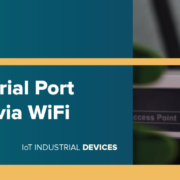Toit was founded in 2018 by a team of developers who built V8 for Chrome on Google in order to build a generic firmware for IoT devices that will replace the traditional development process. They offer a completely new feature set and a new Python-like programming language developed specifically for IoT. Toit is a high-level object-oriented language with a simple, easy-to-use Python-like syntax that is 20 times faster than MicroPython.
Key Features for Toit IoT Platform:
- Light and efficient multitasking capabilities on an MCU, enabling complex IoT solutions to work on battery-powered devices.
- A new high-level object-oriented programming language.
- A publicly available gRPC API to have full control over your devices.
- An MQTT-like PubSub API for communicating with other devices over the cloud.
- Cellular connectivity with NB-IoT / CAT M-1 and out-of-the-box Wi-Fi support
CLI and SDK support on Windows, macOS, and Linux. - VS Code extension for seamless integration with their platform, allowing for faster development.
- No subscription or provisioning fees
A look into the features of Toit programming language
Unlike other programming languages used for embedded systems, Toit is a language that was developed solely for IoT. So, it is a dedicated language for IoT that allows for better power management which is important for battery-based systems. Toit features an automatic memory management system which helps to avoid crashes. The new language also comes with a garbage collector, aiding the memory management system. Features like these are not available in traditional programming languages and might be a challenge implementing those using languages like C.

“With Toit, we wanted to create a high-level language that would avoid the limitations of the existing languages used in IoT development. On top of this, the Toit language had to be intuitive to learn and safe to use.” says the Toit team. The syntax of Toit is modern, simple and quite similar to Python. So, a Python developer can easily learn this new language within a few hours and deploy their first application within 15 minutes. Toit is an indentation based language just like Python and has no braces or semicolons. The files are saved with ‘.toit’ extensions and have a VS code language extension for a richer developing experience. So once you start developing with the Toit platform, there’s no coming back.
Source: https://opencloudware.com/toit-platform-redefines-the-way-we-implement-iot-applications/
Industrial use of ESP32-based solutions
One of industrial IoT devices, supporting Espressif’s ESP32 technology is eModGATE from TECHBASE. Economical, ESP32-based solution can serve as an end-point in any installation or works well as a gateway, gathering data from scattered sensor mesh across the installation. For more information and also Raspberry Pi based solutions check Industrial IoT Shop with all the configuration options for eModGATE.









